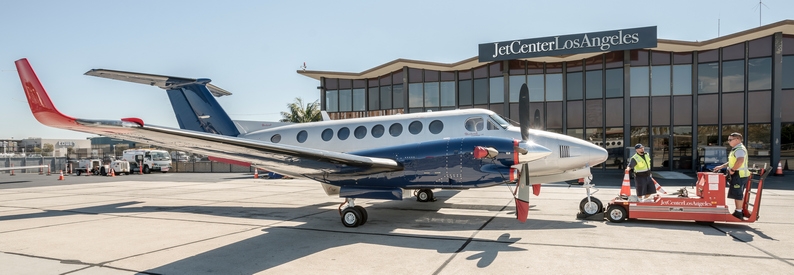Advanced Air Targets Growth in Midsize, Large Jets

Advanced Air, a U.S.-based charter operator headquartered at Hawthorne Airport (California), is set to expand its midsize and large business jet fleet by integrating the aircraft of its recent acquisition, Desert Jet. Within the next four months, Advanced Air aims to transition Desert Jet’s fleet to its own Part 135 certificate, boosting its capacity in the high-demand midsize jet segment.
Integration of Desert Jet’s Fleet
Desert Jet, based at Palm Springs Jacqueline Cochran Regional, brings a diverse Part 135 fleet to Advanced Air, comprising one Challenger 300, one Citation Bravo, three Citation Jet 3s, two Citation Sovereigns, and one King Air 350i. Advanced Air, currently operating two Challenger 300s and a Gulfstream G550, anticipates that adding Desert Jet’s fleet will strengthen its presence in the on-demand charter market.
“Transferring Desert Jet’s aircraft to our Part 135 certificate will enhance our ability to meet demand for Citation Jets and the King Air 350,” explained Levi Stockton, President of Advanced Air. “This acquisition aligns with our goal to grow our charter business alongside our scheduled airline operations.”
Focus on Midsize and Large Business Jet Growth
Following the acquisition, Advanced Air is poised to broaden its large jet fleet. Stockton confirmed that the company is actively considering expanding its inventory of long-range jets, such as the G550, to meet increasing demand for worldwide charters. Advanced Air’s diversified model, which includes both scheduled airline and charter services, provides resilience in a fluctuating market.
“When one segment slows, another usually picks up,” Stockton noted. “The charter market, especially in Q4, is typically strong, and we’re seeing that increase now. However, our business model doesn’t solely depend on charter demand, allowing us to maintain stability throughout the year.”
Turboprop and Dornier Fleet Operations
Advanced Air operates nine Beechcraft King Air 350s, two Pilatus PC-12s, and two Dornier 328-300s, emphasizing the King Air’s two-engine reliability and greater payload capacity over the PC-12. Currently, only one PC-12 is active on an Essential Air Service (EAS) route connecting Las Vegas, Merced, and Hawthorne, with the contract up for renewal in 2025.
The Dornier 328s, critical for short-field operations at airports like Hawthorne and Crescent City, are integral to Advanced Air’s fleet. Stockton expressed the company’s intention to keep the Dorniers operational as long as parts are available, though plans for a replacement are being considered.
Strategic Network and EAS Contracts
Advanced Air owns several aircraft used for scheduled services, including Do328s, one PC-12, and four King Airs. The airline operates 194 weekly flights across 12 southwestern U.S. airports, with four routes (Crescent City, Merced, Silver City, and Carlsbad) under EAS agreements. Stockton indicated that future EAS contract bids would be limited to routes aligning with Advanced Air’s established network in the Southwest.
FBO Operations and Aircraft Management
Alongside its fleet expansion, Advanced Air continues to evaluate its Fixed Base Operator (FBO) footprint. While the company did not acquire Desert Jet’s Palm Springs FBO, it owns Jet Center Los Angeles at Hawthorne. Stockton noted that while the FBO market has become saturated, Advanced Air remains open to growth opportunities in this sector.
In terms of fleet management, Advanced Air operates all its managed aircraft under Part 135, allowing them to be chartered. While the company is open to Part 91-only management contracts, no such opportunities have yet materialized. If approached, Advanced Air would consider such arrangements, preferably with aircraft types it already operates.
Navigating Supply Chain Challenges
Supply chain constraints, such as limited availability of parts and pilot training simulator slots, have impacted the aviation industry broadly. Stockton reported that while Advanced Air’s access to parts has improved, some items—particularly windshields—remain costly and scarce. Despite these challenges, the company continues to prioritize reliability and growth in both its scheduled airline and charter services, positioning itself for steady expansion in the midsize and large business jet markets.
Sources: AirGuide Business airguide.info, bing.com, ch-aviation.com
